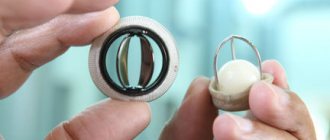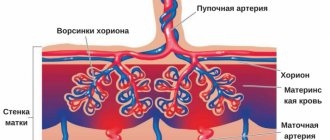Splenomegaly is a pathological condition characterized by an enlarged spleen. This is not an independent disease, but an important symptom of another disease. It is also worth noting that an enlarged spleen can be diagnosed in 5% of completely healthy people.
- Causes
- Forms
- Symptoms
- Diagnostics
- Treatment methods
- Complications
- Prevention
Sometimes splenomegaly can occur simultaneously with liver enlargement. In this case, they talk about the progression of hepatosplenomegaly.
This pathological condition can occur in people from different age groups, including young children. The spleen is an unpaired organ that is located in the abdominal cavity on the left side. This is a kind of anatomical “filter” that has the ability to retain pathogenic microorganisms, as well as damaged blood cells, and prevent them from spreading further throughout the human body.
Causes
There are many reasons for the progression of splenomegaly. The symptoms, as well as further treatment of the disease in children and adults, depend on what exactly provoked the enlargement of the organ.
The most common cause of progression of splenomegaly are infectious agents:
- acute bacterial: miliary tuberculosis, typhoid-paratyphoid pathologies, as well as sepsis;
- chronic bacterial: splenic tuberculosis, brucellosis;
- viral: rubella, measles, infectious mononucleosis, liver disease (hepatitis);
- protozoans: leishmaniasis, malaria;
- mycoses;
- helminthiases.
Other causes of splenomegaly:
- anemia: hemolytic, hemoglobinopathies, etc.;
- ailments of the hematopoietic organs (systemic);
- autoimmune diseases;
- disorders of blood circulation in the body – Pick’s cirrhosis (simultaneous damage to the heart, lungs and liver), portal hypertension, etc.;
- focal lesions of the spleen - abscesses, tumors, cysts, infarctions;
- thesaurismoses are hereditary or acquired metabolic disorders.
Splenomegaly
What role does the spleen play in the body?
The main purpose of the spleen is to correct hematopoietic function. In addition, the spleen ensures normal blood clotting and filters it to remove pathogens.
It is an important participant in metabolism in the human body. The reasons for the enlargement of the spleen are often associated with the occurrence of diseases of neighboring organs; it is, as it were, rebuilt to cover the gap of functional disorders.
For example, when a diseased liver reduces the outflow of blood from other internal organs, the spleen reflexively increases in size to compensate for the disruption of metabolic processes.
The spleen acts as a fine filter for blood purification. Of all the lymph nodes in the body, the spleen is the largest. Thanks to the spleen, the blood is cleared of decay products (dead cells), pathogenic bacteria, antigenic particles, which are foreign proteins.
The spleen blocks all attempts by microbes to enter the body, bypassing the immune system. When the spleen is enlarged, its consistency is not painful or painful, dense or soft.
Regardless of the cause of the enlarged spleen, in rare cases it becomes so large that adjacent internal organs are compressed. In this case, the patient experiences pain.
Forms
In medicine, there are two forms of splenomegaly, which can manifest in both adults and children:
- inflammatory;
- non-inflammatory.
The inflammatory form of the disease develops under the influence of helminthic infestations, bacterial infections, due to infarction and abscess of the spleen (a common cause of progression). Against the background of all this, a decrease in its basic functions occurs, as well as tissue inflammation.
The non-inflammatory form of the pathology occurs without tissue inflammation. But there is a decrease in immunocompetent and selective function. Its development is preceded by autoimmune pathologies, anemia, diseases of the hematopoietic organs, etc.
Enlarged spleen
This condition is medically called splenomegaly. An enlarged spleen, as a rule, can be easily palpated (palpated). It is well known that in a healthy person the spleen cannot be palpated. However, in certain unforeseen cases, the organ is capable of more than doubling its size.
As noted above, the weight of a healthy spleen is 150 g. Its dimensions are 10-11 cm in length and 3-4 cm in width. The diagnosis of splenomegaly is usually made when the spleen is enlarged more than 200 g.
Other cases, when the enlargement of the organ does not exceed acceptable limits and are diagnosed by “light percussion”, echography or tomography, are not considered a violation.
Why does the spleen increase in size?
An enlarged spleen can increase the uptake of blood cells, but this situation has the other side of the coin - in the process of extracting a large number of pathogenic cells from the circulatory system, the filtering ability of the spleen deteriorates. This is another reason for the large increase in the size of the spleen.
Gradually, the pathological process can go so far that an unacceptable number of cells begin to be removed from the circulatory system. This phenomenon is called hypersplenism - the pathological destruction of blood cells, causing a decrease in platelets, red blood cells or white blood cells.
Thus, a decrease in the number of red blood cells leads to anemia. In turn, a decrease in the number of leukocytes provokes the development of infectious diseases. A decrease in the number of platelets has a detrimental effect on hemostatic functions.
If the causes of spleen enlargement are not determined in a timely manner and appropriate comprehensive treatment is not started, the spleen will destroy completely healthy cells along with pathological ones.
The spleen tends to increase in size with concomitant not only somatic, but also oncological diseases.
List of the most common causes of an enlarged spleen
- Leukemia, granulomatosis.
- Liver diseases - cysts, tumors, cirrhosis.
- Hematological pathology - leukemia, immunoleukemia, anemia.
- Severe chronic and acute infectious diseases - syphilis, malaria, brucellosis.
- Pathological changes in blood circulation.
- Opisthorchiasis.
- Monocytic tonsillitis
Symptoms
The clinical picture may differ slightly depending on what form of the disease was diagnosed in the person. It is also worth noting that the symptoms of splenomegaly are more pronounced in children.
Symptoms of the inflammatory form:
- intoxication syndrome;
- temperature increase;
- while palpating the left hypochondrium, the patient notes pain in this area. Pain may radiate to the right hypochondrium (to the location of the liver);
- As the pathology develops, cutting pain appears in the left hypochondrium. General symptoms are supplemented by loose stools and vomiting.
Symptoms of the non-inflammatory form:
- the temperature can occasionally rise to 37.5 degrees, but most often it is within the normal range;
- when palpating the left hypochondrium, there may be no pain at all, or a mild pain syndrome may be noted;
- the patient notes that a weak and nagging pain has appeared in the area where the spleen is located;
- There is no intoxication syndrome.
Should splenomegaly be treated?
An increase in non-oncological origin is eliminated by treating concomitant pathology. The therapeutic direction is selected depending on the diagnosis of the primary disease.
Conservative treatment consists of prescribing various drugs aimed at the cause of the pathology.
Medicinal groups:
- antibacterial;
- antiviral;
- hormonal;
- antifungal;
- antiprotozoal;
- antitumor (in the early stages of neoplasms).
Bone marrow transplantation or transfusion of blood components is required for hematological diseases.
Surgical treatment is primarily indicated for malignant neoplasms and splenic abscess.
Splenectomy is necessarily prescribed for:
- thrombosis of the splenic vein;
- congenital spherocytosis;
- autoimmune thrombocytopenia;
- villous cell leukemia;
- Gaucher's disease.
Previously, Hodgkin's lymphoma was an indication for organ removal. Now, thanks to the improvement of staging methods, this measure is rarely resorted to. There is evidence that in adults the risk of developing other tumors increases sharply after splenectomy.
Splenomegaly is not a disease, but only a clear sign of the development of any abnormalities in the body. Therefore, the goal of specialists is to identify the reasons that provoked this state of the organ.
If infectious pathologies are detected, treatment in a hospital is necessary. In case of any diseases of the circulatory system, a thorough, long-term study of the patient’s blood and the entire body is performed, specialists draw up a complex treatment plan and, most likely, in this case, the patient will need to be hospitalized several times.
Treatment of splenomegaly
Depending on what disease caused the development of the anomaly, the patient may be prescribed the following drugs:
- antitumor - if the cause of abnormal growth of the spleen is tumors: Methotrexate (treatment of leukemia in adults and children, as well as breast cancer in women), Bruneomycin (antibiotic for the treatment of neuroblastoma, Wilms tumor and lymphogranulomatosis), Benzotef (prescribed for lung or breast cancer); "Degranol" (indicated for lymphocytic leukemia, myeloid leukemia and lymphogranulomatosis);
- hormonal - to relieve inflammation and suppress immunity: “Prednisolone” related to glucocorticoid drugs. It must be taken continuously for 3 to 6 months (decided by a specialist depending on the situation) without exceeding a dose of 20-40 g per day as prescribed by the attending physician;
- antibacterial – when the cause of spleen growth is bacterial infections: “Adefovir” for hepatitis B; "Chloroquine" and "Pyrimethamine" for malaria; "Azithromycin" and "Clarithromycin" for mononucleosis;
- antifungal - if the cause of splenomegaly is fungal diseases: “Claforan”, “Fluconazole”, “Nystatin”, “Ampioks”.
Physiology of the spleen
Only with complete relief from the diseases that provoked the abnormal enlargement of the spleen will its size return to normal.
In parallel with the treatment of the underlying disease that provoked splenomegaly, specialists use methods that help reduce the spleen to normal size. For this purpose use:
- Transfusions of leukocyte and platelet masses.
- Drug treatment - the patient is prescribed depending on the cause that provoked splenomegaly.
In cases where all the causes of excessive enlargement of the above organ have been eliminated, but nevertheless the spleen continues to actively increase in size, experts insist on its removal. If advanced tumors are detected, surgery to remove the spleen is also often recommended.
Methods for diagnosing the spleen
Such a procedure can provoke a sharp decrease in a person’s immunity, so patients who have undergone organ removal are necessarily prescribed a course of antibiotics and measures aimed at immunizing the body. After undergoing surgery, a person needs to monitor his daily diet. It should contain food products enriched with vitamins.
Diagnostics
If any of the above symptoms occur, you should immediately consult a doctor to undergo diagnostics and clarify the diagnosis. The main task of a medical specialist is to accurately establish the pathology that caused the progression of splenomegaly.
The standard diagnostic program includes:
- analysis of complaints and clarification of symptoms;
- inspection;
- blood analysis;
- blood biochemistry;
- coagulogram;
- Analysis of urine;
- blood culture;
- Ultrasound. Makes it possible to assess the condition of the abdominal organs - spleen, liver, pancreas, etc. The method is often used to diagnose splenomegaly in children;
- genetic research;
- sterile puncture;
- CT;
- autoimmune biochemical markers.
Treatment of the spleen with the most effective folk remedies
There are many known ways to help normalize the functioning of this organ and relieve pain. In addition to medications prescribed by the attending physician, folk remedies effectively fight the disease. Despite their availability and ease of use, their use is possible only after consultation with a qualified specialist.
Folk remedies are actively used to treat spleen
Honey ointment
For splenomegaly, they practice applying a honey-based ointment. To prepare the medicine, mix ghee, grated ginger and honey in equal parts. It is advisable to store the resulting product in a dark place. Apply to the left hypochondrium and do not rinse for at least 30 minutes. Duration of therapy is 2 months.
The healing properties of honey have been used for many millennia to treat pathologies of internal organs.
Herbal infusions
Medicinal herbs have a wide range of medicinal effects. In various combinations, they can either enhance each other’s beneficial properties or be mutually exclusive. Therefore, it is important to choose the right ingredients for healing tinctures.
Table 3. Recipes for herbal infusions
| Components | Preparation | Application | Course duration |
| Shepherd's purse grass | Pour 10 grams of dried herb into 250 ml of boiled water, leave for 30 minutes, cool and squeeze through cheesecloth. | 1 tbsp. 5 times a day | 2 weeks |
| Hop cones | Combine one portion of hop cones with four portions of 40% alcohol. Infuse for 2 weeks. | 30 drops 3 times a day | 10 days |
| Sequence grass, strawberry and nettle leaves, violet flowers | Mix the ingredients in equal parts, take 2 tbsp. l of the mixture and cook for 15 minutes in 500 ml of boiled water in a water bath. | 1 glass 3 times a day | 2 weeks |
| Flowers of chamomile, celandine herb, immortelle and fennel | Mix the ingredients in equal parts, take 1 tbsp. mixture and pour 1 cup of boiling water. Leave for 3 hours. | 1 glass 3 times a day | 10 days |
| Calendula flowers and yarrow herb | Mix 20 grams of yarrow and 20 grams of calendula, pour 500 ml of boiling water and leave for 1 hour. It is advisable to wrap the container with the broth in a blanket or towel. | 150 g 4 times a day | 3 weeks |
| Powder of plantain, sorrel and nettle leaves | Mix the ingredients in equal parts. Store at room temperature with low humidity. | 0.5 tsp 3 times a day with warm water | 10 days |
| Grass agrimony | 1 tbsp. steam the herbs in 1 glass of boiled water, leave for 1 hour and strain through cheesecloth. | 1/3 glass 3 times a day | 2 weeks |
| Sagebrush | 1 tsp wormwood, pour 1 cup of boiling water. Wrap the jar with the broth in a blanket and let it brew for at least 1 hour. Then add another 1 cup of boiling water and strain. | 1/3 cup 3 times a day, mixed with honey or sugar | 2 weeks |
| Dried rose hips | Pour 30 grams of berries with boiled water. Leave for at least 30 minutes. | Half a glass 3 times a day | 10 days |
When using any collection, the individual characteristics of the patient and the presence of concomitant diseases should be taken into account. It is important to take into account the characteristics of blood pressure: choleretic herbs, for example, have the ability to increase it. It is also necessary to monitor the intestinal reaction to each herbal infusion and, if necessary, eliminate components that lead to constipation or diarrhea. Due to the fact that some herbs can act as abortifacients, it is advisable for expectant mothers not to resort to herbal medicine. Breastfeeding women should also avoid herbal medicine.
Herbal infusions help activate the body's internal resources and stabilize the functioning of the spleen
Some plants can contribute to an allergic reaction. To avoid such side effects, it is advisable to start with preparing a mono-decoction. Observing the body's reaction, gradually add other components.
In the first week of herbal treatment, it is recommended to take decoctions half an hour before meals. After 7 days, you can switch to taking medications 30 minutes after finishing your meal. To avoid the body becoming accustomed to the medicinal components, the composition of the preparations must be changed every 2 months. Upon completion of 2 months of herbal medicine, it is necessary to take a break of 2 to 4 weeks. To achieve results, the total duration of the course must be 6 months or more.
Raisin tincture
The use of these dried berries is especially effective in treating spleen tumors. To prepare this healing product, you will need 50 grams of washed raisins, which should be poured with 1 glass of grape vinegar. The drink must be brewed within 12 hours. Take 30 ml of tincture in the morning on an empty stomach. With regular use, for a course of at least 1 month, resorption of tumors and complete cessation of internal bleeding are observed.
Raisins not only do not lose, but also increase the healing qualities of grapes
Fresh cabbage and pomegranate
Considering the large number of beneficial elements contained in these fruits and vegetables, using freshly squeezed juices will strengthen the immune system. Taking into account the close connection between the spleen and the immune system, you can count on a positive effect from drinking drinks. Take 3 times a day 1 hour before meals for 2 months. It is advisable to drink juices warm.
Pomegranate juice contains a huge amount of vitamins and potassium
Propolis extract
Propolis extract is successfully used to treat various diseases of the spleen. To prepare this remedy, you need to purchase a 30% alcohol tincture of propolis at the pharmacy. Add 30 drops of the drug to ¼ glass of drinking water and take 30 minutes before meals every 3 hours for 10 days. Over the next 10 days, the dose should be reduced to 4 times a day.
Since the time of Hippocrates, propolis has been under the watchful eye of doctors around the world.
Casserole with radish, horseradish and honey
The combination of these incredibly healthy products will serve well for the prevention of spleen diseases. To prepare this dish, you need to cut out the core of a large radish and fill it with 3 tablespoons. chopped horseradish roots, season with honey and place in the oven. Take 2 tbsp of casserole. in the morning on an empty stomach and 1 tbsp. before going to bed. One dish is enough for 2 days of use. The duration of the course is 10 days.
Horseradish is very effective for anemia
Chicory infusion
Chicory is used to relieve pain in diseases of the spleen. To prepare the tincture, pour 1 tbsp. product with 1 glass of boiled water, cook in a water bath for 10 minutes and leave for 30 minutes. Take the strained liquid 2 sips 3 times a day. The duration of the course is 1 week.
Chicory is incredibly beneficial for the cardiovascular and immune systems
With all the variety of medicinal remedies developed within the framework of traditional medicine, in no case should you self-medicate. If you detect any suspicion of spleen pathology, you must immediately consult a doctor and strictly follow these recommendations.
Treatment methods
Treatment of splenomegaly is carried out only in inpatient conditions. Treatment with folk remedies at home is prohibited, as this can lead to a worsening of the patient’s condition, as well as the development of complications.
The first thing that medical specialists need to do is to find out the true reason for the progression of the pathological condition in the patient. It is important to accurately establish the disease that caused the splenomegaly, since first of all it is necessary to cure it.
Treatment of splenomegaly in children and adults includes the use of:
- hormonal agents. Prescribed to slow down the development of the inflammatory process;
- antibacterial therapy. Indicated if it has been accurately established that splenomegaly has developed under the influence of viruses and bacteria;
- antitumor drugs. Prescribed in the presence of blood and liver ailments, as well as in the detection of tumor-like formations;
- vitamin therapy.
In severe clinical situations, they resort to surgical treatment - the organ is removed.
Spleen size in moderate splenomegaly
If palpation reveals an enlarged spleen, the doctor prescribes an ultrasound. The method reveals the exact location, weight, length, width of the organ. Splenomegaly occurs:
- moderate, which manifests itself temporarily;
- pronounced, observed in individuals with various diseases.
The doctor identifies the type of condition to determine the cause and prescribe treatment. Splenomegaly comes in different sizes in adults and children. For each age, doctors determine the normal size of the spleen.
When palpating, the exact dimensions cannot be determined; the parameters are assessed during ultrasound. An image of the spleen is displayed on the screen, the doctor calculates the length, width, and weight.
In adults
Moderate splenomegaly includes parameters for an adult:
- length from 13 to 20 cm;
- weight from 350 to 500 g.
If the measurement parameters exceed these numbers, the doctor writes in the medical history about a severe form of splenomegaly. In this case, the spleen is enlarged so much that it will stand out from under the ribs (visible to the naked eye). With moderate enlargement of the organ, it can be slightly felt under the left ribs; exceeding the parameters is a temporary phenomenon.
This is interesting: Causes, symptoms, treatment and prevention of hepatosplenomegaly in a child
In children
Splenomegaly in a child is most often physiological. Therefore, the diagnosis of moderate splenomegaly may be made erroneously. This condition is observed in schoolchildren, but this does not indicate a disease.
If splenomegaly is caused by a disease, then in children it is most often helminthic and parasitic infestations, since children spend a lot of time in the sand and do not always wash their hands.
Prevention
There is currently no specific prevention that could protect a person from sudden pathological enlargement of the spleen. But various preventive measures are being taken to help prevent the development of conditions that provoke splenomegaly:
- regular but moderate physical activity;
- quitting smoking and drinking alcoholic beverages;
- vaccinations and inoculations;
- Regular preventive examinations by specialists.











